MANUZIO PAOLO (35 Ergebnisse)
Produktart
- Alle Produktarten
- Bücher (34)
- Magazine & Zeitschriften
- Comics
- Noten
- Kunst, Grafik & Poster (1)
- Fotografien
- Karten
-
Manuskripte &
Papierantiquitäten
Zustand
- Alle
- Neu
- Antiquarisch/Gebraucht
Einband
Weitere Eigenschaften
- Erstausgabe (4)
- Signiert
- Schutzumschlag
- Angebotsfoto (27)
Gratisversand
Land des Verkäufers
Verkäuferbewertung
-
Lettere volgari di diversi eccellentissimi huomini . Libro primo e secondo.
Erscheinungsdatum: 2005
Anbieter: Libreria Piani, Monte San Pietro, BO, Italien
Buch
Bologna, Bononia University Press, 2005, h. 16 cm. ril. in p. pelle bianca con titoli e fregi in oro al dorso, pp. (XX) 638. Copia anastatica della edizione di Venezia, 1545.
-
Commentarius Pauli Manutii in Epistolas Ciceronis Ad Atticum : Index Rerum, Et Verborum (Classic Reprint)
Verlag: Forgotten Books, 2018
ISBN 10: 0656590408ISBN 13: 9780656590407
Anbieter: Buchpark, Trebbin, Deutschland
Buch
Zustand: Sehr gut. Zustand: Sehr gut - Gepflegter, sauberer Zustand. | Seiten: 864 | Sprache: Lettisch.
-
Kupferstich-Porträt von Zuliani nach Longhi. Paolo Manuzio.
Verlag: Padova, Bettoni, 1812., 1812
Anbieter: Antiquariat Thomas Rezek, München, Deutschland
Kunst / Grafik / Poster
circa 30,5 x 22,5 cm (Blatt). 1 Blatt verso weiß Brustbild-Portrait im Oval, darunter Legende. Zu sehen ist der italienische Drucker, Verleger und Humanist Paolo Manuzio (auch Paulus Manutius, 1512-1574). - Gut erhalten.
-
Paulli Manutii commentarius in M. Tullii Ciceronis epistolas ad diversos. Accedunt eiusdem scholia et Hieronymi Ragazonii in easdem Ciceronis epistolas commentarius. Curavit Chr. Gottl. Richterus. Pars Altera/Prima.
Verlag: Lipsiae Crusius -80, 1779
Anbieter: Neusser Buch & Kunst Antiquariat, Neuss, NRW, Deutschland
0. 2 Bände. 8°. XXX/611-1048, [68] Bl./606 Seiten Halbleder, mit Lederecken. 3seitiger Rotschnitt, Einbände stark berieben und bestossen, Seiten gebräunt. Latein 1,300 gr.
-
Paulli Manutii Epistolarum libri XII.Eiusdem quae praefationes appellantur
Verlag: Apud Io. Griffum, Venetiis, 1584
Anbieter: Coenobium Libreria antiquaria, Asti, Italien
In 16 (cm 10 x 15), pp. (16) + 536 + (2) + 128 + (6). L'ultimo foglio, con l'indice, mancante di una parte (margine interno). Alone all'angolo superiore delle prime 200 pagine circa. Cartonatura rifatta. Edizione dell'Espistolario manuziano. ITA.
-
Antiquitatum romanarum& Liber de Senatu.
Verlag: s.n. (ma Manuzio), Venetiis,, 1581
Anbieter: Studio Bibliografico Benacense, Riva del garda, Italien
Cm. 20,5, pp. (8) 116 (13) 98-110, 18. Piccolo ritratto di Manuzio in xilografia al frontespizio, testate e capolettera xilografici. Legatura in pergamena rigida antica (rimontata). Esemplare marginoso ed in ottimo stato di conservazione. Elegantemente impresso. Ex libris. La seconda parte dell'opera è dedicata al calendario romano ed alla sua descrizione.
-
Tre libri di lettere volgari di Paolo Manutio.
Anbieter: Libreria Oreste Gozzini snc, Firenze, FI, Italien
Erstausgabe
In Venetia, [Paolo Manuzio], 1556, in-8, legatura settecentesca in mezza pergamena, titolo in oro su tassello in pelle al dorso, tagli azzurri, cc. 135, [1]. Con ancora aldina in xilografia sul frontespizio. Prima edizione delle lettere volgari indirizzate da Paolo Manuzio (1513-1574), figlio e successore del grande Aldo, a vari corrispondenti. L'edizione è impressa dallo stesso Paolo Manuzio. Esemplare nel quale non è stata legata l'ultima carta che recava una seconda marca editoriale in xilografia, cfr. descrizione in ICCU. Per il resto ottime condizioni. Antica notazione di possesso manoscritta sul contropiatto anteriore: "Della famiglia Trissino di Vicenza al Fosso, 1820". Ex-libris araldico settecentesco inciso in rame (Gaspare Negri, vescovo di Cittanova e Parenzo) applicato al verso del frontespizio. Renouard 3. ed., p. 169, n. 15. STC Italian, p. 413. Adams, M-496.
-
In Epistolas Ciceronis ad Atticum, Pauli Manutii commentarius. (In librum I - librum XVI).
Verlag: Venetiis, Apud Paulum Manutium, Aldi Filium,, 1553
Anbieter: Antiquariat J. Hünteler, Hamburg, Deutschland
Verbandsmitglied: GIAQ
Buch Erstausgabe
Pergament-O. Zustand: Gut. -. 413, (2), (eig. 826, (1) S., Kommentar zu den 16 Büchern des Cicero an Titus Pomponius Atticus (109-32 v.Chr.). - Venedig, Paulus Manutius, 1553, 8°, einseitig paginiert, Schweinslederband mit Rückentitel von alter Hand, marmorierter Schnitt, Einband etwas fleckig, 1 Ecke etwas gestaucht, Rücken mit kl. Stoßstelle, Vorsätze und Seiten bis S. 65 stärker wasserfleckig, danach nur blasse Wasserspuren, Seite 1 mit kl. Fehlstellen im Rand und im Text, teilweise hinterlegt, Seiten im oberen Rand knapp beschnitten, Titelblatt fehlt, im Ganzen gutes Exemplar 102034_Geisteswiss._S:B la Gewicht in Gramm: 1200.
-
Epistolarum Pauli Manutii libri X. Duobus. Nuper. Additis. Eiusdem quae Praefationes appallantur.
Verlag: Venetiis, In Aedib. Manutianis, 1571., 1571
3 parts in 1 vol in-8°. [16] 469 pp, [2] 139 pp [12], 67 pp [4]. Contemporary overlapping vellum . Old manuscript notes on the front and back cover. Early edition of these letters by Paolo Manuzio , son of Aldo Manuzio founder of the famous Aldine press. Library stamp on the front page,old manuscript notes on page 336, the original binding with some wear but still good copy. Ref: Brunet, T3, 1383.
-
In epistolas Ciceronis ad Atticum commentarius
Verlag: Venice, Paolo Manuzio, 1557
Anbieter: Sokol Books Ltd. ABA ILAB, London, Vereinigtes Königreich
Buch
Hardcover. Zustand: Good. 8vo, ff. [4], 432. Roman letter, little Italic and Greek; printer s device on title; minor wormtrail at blank foot of first gathering, light small rustspots to a few leaves, ink smear to lower corner of ff. 243v-244r. A very good copy in contemporary Leipzig alum-tawed pigskin (Einbanddatenbank, w000428 ), blind-tooled with triple-fillet border, external roll of Biblical figures (Moses, David, John the Baptist and Christ bearing the cross) amid floral decoration and central roll of palmette with three flowers on top and bottom; contemporary title inked on spine alongside early ms shelfmark and title on paper labels slightly rubbed, a few small wormholes, corners lightly chipped; contemporary inscription Sum ex libris Claudij Simonet on front endpaper recto, ex libris of an Augustinian convent in early seventeenth-century hand on title and an earlier one trimmed at foot; blue ink stamp of Hermann Funke on verso of title. Aldine edition of an important Renaissance commentary on Cicero s most famous epistolary collection, first published in 1547. Paolo Manuzio (1512-1574) was one of the most prominent humanists of the late Italian Renaissance. The youngest son of Aldus, he was a very influential scholar and publisher in his own right, living up to the family tradition. A master of the epistolary genre with very successful collections both in Latin and vernacular, he was especially engaged, as a scholar, in Latin literature. His commentaries on the works of Cicero and his polished Latin prose won him long-lasting fame throughout Europe. Under his management, the Aldine press flourished once again, after the dark times of the early 1530s. He also acted as the official printer to the Academia Venetiana between 1558 and 1561, while in the following nine years he ran the first papal press in Rome. Cicero s letters to his friend Atticus, written from 68 to 44 BC and traditionally arranged in 16 books, provide an unparalleled insight not only into the author s daily life and always provoking thoughts, but also into the decades preceding the fall of the Roman Republic. BM STC It., 413; Adams, M 460; Brunet, III, 1383; Graesse, IV, 375 ; Renouard, 171:9. L2293b.
-
Epistolarum Pauli Manutii Libri 10. Duobus nuper additis eiusdem quae Praefationes appellantur.
Verlag: Venice in Aedib. Manutianis, 1571
Anbieter: Sokol Books Ltd. ABA ILAB, London, Vereinigtes Königreich
Buch
Hardcover. Zustand: Good. 8vo. 3 parts in one. pp. [xvi], 469, [iii]; 67, [v]; 139, [xiii]. [A-2G8, 2H4; a-d8 e4; A-I8 K4.] Preface in Roman letter, text in Italic. Large woodcut Aldine anchor & dolphin device with legend Aldus Iunior on 1st and 2nd titles and at end of first two parts, Aldine woodcut device (without Aldus Iunior ) at the end of third part, miniature woodcut portrait of Aldus Manutius the Elder, within architectural border, on verso of first and second titles, early ownership inscription on 1st title Michaelii Pasini 1628, 1632, several others crossed out, occasional marginal notes and underlinings, notes in probably Pasini s hand on verso of last leaf. Light age yellowing, two quires lightly browned, some marginal spots and thumb marks, occasional minor, mostly marginal, light waterstaning, a little short at head A good copy in quarter speckled sheep over marbled boards c. 1700, spine with blind ruled raised bands, small fleurons gilt at centres of compartments, tan morocco title label gilt lettered, all edges sprinkled red, worn a head, a few small worm holes in lower compartment. A collection of the celebrated Latin epistles in Ciceronian style by the Venetian scholar - printer Paolo Manuzio (1512-74), third son of Aldo the Elder (1449-1515), founder of the famous Aldine press. The letters, dated between 1558 and 1570, were edited and printed by Paolo s eldest son Aldo the Younger (with his unusual Aldus Junior device, Ahmanson-Murphy A22a) who had succeeded to the family business in 1561, when his father left for Rome to manage the Tipografia del Popolo Romano for Pope Pius IV. Aldo the Younger was a professor of literature who wrote a treatise on Latin spelling. The 3rd part contains Paolo Manuzio s dedicatory prefaces to his redactions of the classics. Indexes at the end of the volume list the names of the 124 recipients of the letters, and the names of the 28 dedicatees of the prefaces. The circular woodcut portrait of his father, Aldus Manutius the Elder is surrounded with the legend : Aldus Pius Manutius R.; the architectural border comprises the Aldine arms and motto Insigne Manutianum . Complete as called for in the final register. Some copies however are found with the 27 pages of book XI, which were printed as a supplement to this edition and which are found bound in some copies, (see a long explanatory note in Renouard). This eleventh part was then printed as an integral part of the 1573 edition. Renouard 212-213, no 7. USTC 840490. Adams. M 489. L2913.
-
Epistolae, et praefationes
Verlag: Venice, In Academia Veneta [Paolo Manuzio], 1558
Anbieter: Sokol Books Ltd. ABA ILAB, London, Vereinigtes Königreich
Buch
Hardcover. Zustand: Good. FIRST EDITION. 8vo, ff. [12], 148 [i.e. 142]. Predominantly Italic letter, little Roman. Large printer s device on title, hand-coloured by contemporary hand; title slightly dusty; light, mainly marginal waterstains, with a few wormholes to upper gutter of first gathering, small stain to f. 91. A good copy in contemporary limp vellum, contemporary title inked along spine and lower edge; minor light stains and loss to front cover; nearly contemporary inscription Verde Brasca (probably the Verdebrasca of Milan) on front endpaper, title and rear pastedown. First edition of one of the most influential Neo-Latin collections in early modern Europe. Paolo Manuzio (1512-1574) was a prominent humanist of the late Italian Renaissance. The youngest son of Aldus, he was a very influential scholar and publisher in his own right, living up to the family tradition. A master of the epistolary genre with very successful collections both in Latin and vernacular, he was especially engaged, as a scholar, in Latin literature. His commentaries on the works of Cicero and his polished Latin prose won him long-lasting fame throughout Europe. Under his management, the Aldine press flourished once again, after the dark times of the early 1530s. He also acted as the official printer to the Academia Venetiana between 1558 and 1561, while in the following nine years he ran the first papal press in Rome. This collection comprises several letters and prefaces written by Paolo to the Gotha of the political, religious and academic establishment of mid-sixteenth-century Italy. The work kept growing over the following 15 years until it included 12 books. However, some self-censorship took place in order to cope with the Indexes of forbidden books issued by Paul IV in 1559 and the Tridentine Council in 1564, so that a few letters appear here for the first, and only, time in their original form. As Renouard sarcastically glossed, Paolo claimed in the initial dedicatory letter that he decided to publish the present collection because of pressure from his fellow members of the Venetian Academy. BM STC It., 413; Adams, M 483; Brunet, III, 1383; Graesse, IV, 375; Renouard, 271:9. L2279.
-
VD17 547:691737Q (nicht in Wolfenbüttel).- Seltene, erweiterte Ausgabe der Briefsammlung des venezianischen Gelehrten u. Druckers Paolo Manuzio (1512-1574), erstmals 1558 erschienen. Er war der Sohn des Gründers der berühmten Aldine-Presse. Die Briefe, datiert zwischen 1558 und 1573.- Titel mit kl. Monogr.-Stempel, Widmung mit kl. Exlibris-Stempel, gebräunt od. braunfleckig, Vorstücke mit kl. Randläsuren u. wasserrandig, wenige zeitgenöss. Anstreichungen, ohne vord. flieg. Vors., Ebd. etw. fleckig u. bestoßen.
-
Epistolae clarorum virorum selectae
Verlag: Paris, Bernardo Torresani in Aldina Bibliotheca, 1556
Anbieter: Sokol Books Ltd. ABA ILAB, London, Vereinigtes Königreich
Buch
Hardcover. Zustand: Fine. 16mo, ff. 123, [5]. Italic letter; Aldine device on title and final recto, both hand-coloured in gold and silver probably later; floriated headpiece and initial, both gilt, gilt underlining on final leaves; occasionally lightly dust-soiled, tiny wormhole in blank of title, nick to blank outer upper corner of last two leaves. A fine copy in mid-nineteenth-century French red morocco, gilt panels and fleur-de-lys at corners, gilt spine with floral motif, title and editorial data, gilt board edges and turn-ins, original marbled pastedown, endpapers and flys; bookplate of the French physician Ernest Bonnejoy (1833-1896) on front pastedown and of the American lawyer Charles Walker Andrews on ffep.; c18 autograph L Abbé Manuel on third ffep., c19 pencil note See Beckford s Cat. vol. 1 p. 211 no 2837 on second; contemporary ex libris Fran[cis]ci Ras.i on title, likely that of François Rasse des Noeux or Noeuds, the famous Parisian surgeon and spy in the English service. Rare second edition (first in France) of a very successful collection of letters to or from illustrious personalities of the Italian Renaissance. On account of the success encountered in France by Aldine editions, Bernardo Torresani, grandson of Aldus s partner Andrea, established a separate branch of the press in Paris in 1554. This collection, brought together by Paolo Manuzio, is comprised of epistles written within the thriving intellectual milieu of Padua and Venice as well as the heterodox religious circle following Juan de Valdés s teaching. Amongst the correspondents are: Jacopo Sadoleto, Reginal Pole, Lazzaro Bonamico, Pietro Bembo, Paul III, Benedetto Ramberti, Gasparo Contarini, Pietro Carnesecchi, Gian Battista Ramusio, Pierre Bunel, Gian Battista Egnazio and Paolo Manuzio himself. One letter is addressed to Aldus from the humanist Janus Parrhasius. Gilding and hand-colouring the Aldine device was a rather common practice in eighteenth-century France amongst wealthy collectors. For instance, the Marquise of Pompidou (1721-1764), the powerful chief mistress of Louis XV and bibliophile, had her Aldine edition of the Cortegiano 1528 painted in pink, blue and silver (BL: 674.k.15), casting on the anchor and dolphin an unexpectedly fashionable aura. Rare. Only 2 recorded copies in the US (Morgan, Brigham Young Uni).Not in Adams. BM STC Fr., 152; Brunet, II, 1021; Graesse, II, 488; Renouard, 296:7 ( jolie édition ): UCLA, 1049.
-
Ultima edito cum optima collata, diligenter recognita, & mendis expurgata. Lugduni Batavorum (Leyden) Apud Petrum Vander AA, 1696. (2),(95),(1) pages (exept G2, column 101-104). Folio. Old, vorn marbled boards woth vellum spine. Partly water-stained.*G 2 is missing.[#199595].
-
Paulli Manutii Epistolarium libri XII. Uno nuper addito. UNITO A: Paulli Manutii - Praefationes quibus libri
Verlag: apud Hieronymum Polum, Torino, 1632
Anbieter: Libreria Antiquaria Giulio Cesare di Daniele Corradi, Roma, ROMA, Italien
p.perg coeva con tass. Bellissima marca tipografica al frontespizio. (16) + 536 + 128 + (6) p. 2 opere in 1 tomo 165x115 mm.
-
Commentarius Pauli Manutij in epistolas Ciceronis ad atticum. Index rerum, & uerborum
Verlag: (Paulio Manuzio), Milano, 1572
Anbieter: Libreria Antiquaria Giulio Cesare di Daniele Corradi, Roma, ROMA, Italien
m.pelle ottocentesca con tass. 808 + (62) p. 150x100 mm.
-
Epistolarum libri XII. Uno nuper addito. Eiusdem quae Præfationes appellantur
Verlag: Venezia, Giovanni Griffio, Venezia, 1584
Zustand: Buono (Good). 8vo. (16), 536, (2), 128, (6) pp. a8, A-Z8, Aa-Tt8. With the printer's device on the title-page. Early eighteenth century calf, gilt spine with red morocco label, marbled endpapers, sprinkled edges. Old entry of ownership on the front fly-leaf: ?Odoardo Vercelli? Edit 16, CNCE 35382. AFTER Aldus the Younger's printing of 1580, Paolo Manuzio's letters were soon afterwards printed in various European cities, but in Italy the work was reprinted only six times until the end of the century. The first was Girolamo Polo in Venice in 1582 (and again in 1588). He was followed at Venice again by Giovanni Griffio in 1584, then by Tarino at Turin in 1587 and in 1595 by Farri at Venice. All these editions are mostly page by page reprints of the 1580 edition, with the exception of that edited by Enrico Farnese printed at Pavia by Viani in 1589. Paolo was the youngest son of Aldo Manuzio the Elder. He had the misfortune to lose his father at the age of two. After this event his grandfather and two uncles, the three Asolani, carried on the Aldine Press, while Paolo prosecuted his early studies at Venice. Excessive application hurt his health, which remained weak during the rest of his life. At the age of twenty-one he had acquired a solid reputation for scholarship and learning. In 1533 Paolo undertook the conduct of his father's business, which has latterly been much neglected by his uncles. Paolo determined to restore the glories of the house, and in 1540 he separated from his uncles. The field of Greek literature having been well night exhausted, he devoted himself principally to the Latin classics. He was a passionate Ciceronian, and perhaps his chief contributions to scholarship are the corrected editions of Cicero's letters and orations, his own epistles in a Ciceronian style, and his Latin version of Demosthenes. Throughout his life he combined the occupations of a scholar and a printer, winning an even higher celebrity in the former field than his father had done. Four treatises from his pen on Roman antiquities deserve to be commemorated for their erudition no less than for the elegance of their Latinity. Several Italian cities contended for the possession of so rare a man. He also received tempting offers from the Spanish court. Although his publications were highly esteemed, their sale was slow. Thus his life was a permanent struggle with pecuniary difficulties. In 1556 he received for a time external support from the Accademia Veneta, founded by Federico Badoer, who failed disgracefully in 1559, and the academy was extinct in 1562. Meanwhile Paolo had established his brother Antonio, a man of good parts but indifferent conduct, in a printing office and book shop at Bologna. Antonio died in 1559, having been a source of trouble and expense to Paolo during the last four years of his life. Other pecuniary embarrassment arose from a contract for supplying fish to Venice, into which Paolo had somewhat strangely entered with the government. In 1561 Pius IV invited him to Rome, offering him a yearly stipend of 500 ducats, and undertaking to establish and maintain his press there. The profits were to be divided between Paolo Manuzio and the Apostolic Camera. Paolo accepted the invitation, and spent the larger portion of his life, under three papacies, with various fortunes in the city of Rome. The works published by the Stamperia del Popolo Romano were mostly Latin works of theology and Biblical or patristic literature. Meanwhile his eldest son, the younger Aldo, had succeeded him in the management of the Venetian printing house. Overtaxed with studies and commercial worries Paolo died at Rome in his sixty-second year (cf. T. Sterza, Paolo Manuzio editore a Venezia (1533-1561), in: ?ACME. Annali della Facoltà di lettere e filosofia dell'Università degli studi di Milano?, 61/2, 2008, pp. 123-168; and F. Barberi, Paolo Manuzio e la stamperia del popolo romano (1561-1570): con documenti inediti, Roma, 1942, passim).
-
Epistolarum [.] libri V. Quincto nuper addito. Eiusdem quae præfationes appellantur
Verlag: Venezia, [Paolo Manuzio], Venezia, 1561
Zustand: Buono (Good). 8vo. (8), 237, (3) leaves (with errors in the foliation, leaf 184 is a blank). A-Z8, AA-HH8. With the printer's device on the title-page and at the end. Nineteenth century half-calf, gilt back with green morocco label, contemporary entry of ownership ?Hieronymi Agnelli?, who may be the Venetian stationer Girolamo Agnelli, mentioned by M. Bury, The Print in Italy, 1550-1620, (London, 2001), p. 124.Edit 16, CNCE 28076; E. Pastorello, L'epistolario Manuziano. Inventario cronologico-analitico, 1483-1597, (Firenze, 1957), p. 14, no. 248; A. Renouard, Annali delle edizioni aldine, (Paris, 1834), p. 184, no. 19. FIRST EDITION in five books. The volume opens with the same dedication to Alberico Cibo (Venice, 1558) of the first Accademia Veneta edition of 1558. The fourth book was added for the first time in 1560. (To Liber I was added 1 new letter:)Lippomanno, Girolamo. [Venezia, Winter, 1560] (l. 27v) (To Liber II were added 6 new letters:)Stella, Fabio. [Venezia, 1558] (l. 44v)Stella, Vincenzo. Asola, [October, 1557] (l. 47r)Sturm, Johannes. [Venezia, Fall?, 1556] (l. 49v)Caro, Annibal. Venezia, [Winter, 1540] (l. 60r)id. [July 1540] (l. 60v)id. Venezia, [August, 1540] (l. 61r) (To Liber III were added 6 new letters:)Muret, Marc'Antoine. Venezia, [July 19, 1559] (l. 81r)Natta, Marco Antonio. [Venezia, November 20 p., 1558] (l. 90r)id. [Venezia, May 12 a., 1558] (l. 9lr)id. [Venezia, January 10 p., 1559] (l. 92r)id. [Venezia, December 13 p., 1558] (l. 92v)id. [Venezia, April 4, 1559] (l. 93r) (Liber IV:)Torre, Michele della. Venezia, [September 21 p., 1559] (l. 94r)Veranzio, Antonio. Venezia [January 12 a., 1559] (l. 95v)Zebridowski, Andreas. Venezia, [Fall, 1559] (l. 97r)Mijszkowski, Petrus. [Venezia, Spring, 1559] (l. 97v)Pinelli, Gian Vincenzo. Venezia, [Summer, 1559] (l. 100r)Panciroli, Guido. Venezia, [Fall?, 1559] (l. 102v)Dudith, Andreas. [Venezia, January 12 a., 1559] (l. 102v)id. (l.104r)id. [Venezia, March 10 a., 1559] (l. 104v)id. [Venezia, Fall, 1559] (l. 105r)id. [Venezia, August 18 a., 1559] (l. 105v)id. Venezia, [Fall, 1559] (l. 105v)id. Venezia, [Summer, 1559] (l. 106r)id. Venezia, [August 18 a., 1559] (l. 106v)id. Venezia, [August 18 p., 1559] (l. 107r)id. Venezia, [January 12 a., 1559] (l. 108r)id. Venezia, [Summer, 1559] (l. 109r)id. Venezia, [Summer, 1559] (l. 109v)Patricki, Andreas. [Venezia, March 10 a., 1559] (l. 121v)id. [Venezia, August 18 a., 1559] (l. 122r)Cousin, Gilbert. [Venezia, Spring, 1559] (l. 123r)Lambin, Denis. [Venezia, Winter 1558/9] (l. 124r)Petro * [Zane, Bernardo. Venezia, April 26, 1553] (l. 124v)Cervini, Romolo. [Venezia, June 25, 1541] (l. 125r)Giliano, Vincenzo. [Venezia, February 22 p., 1559] (l. 126v)Morandi, Francesco. [Venezia, Fall, 1559] (l. 127v)Torrentius [Van der Becke], Levinus. Venezia, [Summer, 1559] (l. 128r)Gambara, Lorenzo. Venezia, [1558 p.] (l. 129r)Nathanael, Nicholas. [Venezia, Fall?, 1560] (l. 129v)n.r. [Padova, Winter?, 1559] (l. 130v)id. Venezia, [July 24 a., 1559] (l. 131v)Severi, Francesco. Venezia, [July 19 p., 1559] (l. 132r)Corrado, Mario. [Venezia, end of February, 1559] (l. 133v)Celsi, Pietro. [Venezia, 1559/60] (l. 134r)Sambucus, Joannes [Zsámboky, János]. [Venezia, June 30 p., 1556] (l. 135r)id. Venezia, [September 21 p., 1559] (l 135v)Contarini, Gaspare. Venezia, [Fall, 1539], (l. 137r)Accolti, Benedetto. Venezia, [Summer, 1539] (l. 138r)id. Venezia, [August p., 1540] (l. 139r)id. Venezia, [1540] (l. 139v)Griffoli, Iacopo. Venezia, [Fall, 1539] (l. 139v)Cruceio, Annibale. Venezia, [July 9 a., 1555] (l. 141v)Merlo, Antonio. Venezia, [February p., 1535] (l. 142v)Sophianos, Michael. Venezia, [Fall, 1559] (l. 143r)Pigna, Giovanni Battista. Venezia, [October 3 p., 1559] (l. 144r)Sambucus, Joannes [Zsámboky, János]. Venezia, [early 1560] (l. 145v)Dudith, Andreas. Venezia, [1560] (l. 146v)Gambara, Lorenzo. Padova, [April-May, 1560] (l. 147r)Bonamico, Lazaro. Venezia, [end 1533]. Book.
-
Zustand: Buono (Good). 8vo. 135, (1) leaves. A-R8. With Aldus' device on the title-page. Leaves 81, 88, 90, 91, 93, 94 and 95 misplaced. Old boards. Basso, pp. 187-188; Braida, p. 307; Edit 16, CNCE 28016; Quondam, p. 302; E. Pastorello, L'epistolario Manuziano. Inventario cronologico-analitico, 1483-1597, (Firenze, 1957), p. 15, no. 273; A. Renouard, Annali delle edizioni aldine, (Paris, 1834), p. 169, no. 15. FIRST EDITION of Paolo Manuzio Italian letter's, which were reprinted in Pesaro by Bartolomeo Cesano in the same year. In 1560 Manuzio published an augmented and revised edition, to which was added a fourth book. The work is dedicated to Antonio D'Avila, the last of the Constables of Cyprus. ?Quando Paolo Manuzio, già editore di una delle più fortunate antologie di lettere volgari, stampa le sue proprie lettere [.] indirizza a Antonio D'Avila Gran Contestabile dell'isola di Cipro, una dedica che rispetta tutti i luoghi comuni: la motivazione dell'affezione del dedicante, individuata nell' ?opinione di virtù', ritenuta, tra le tre cause che muovono all'amore (le altre due sono i benefici e la conformità di costumi), la più potente perché può nascere e si può esercitare anche da lontano, è seguita dall'espressione del ?desiderio di servirlo & honorarlo', dalla lode della patria del dedicatario, Cipro, ?molto honorata' ma resa anche più illustre ?col lume delle sue rarissime virtù' e all'elenco delle ?conditioni che riguardevole lo fanno: che sono, i costumi, gli studi, la grandezza dell'animo, e valor suo', e che danno onore alla sua illustre casata? (C. Schiavon, Una via d'accesso agli epistolari. Le dediche dei libri di lettere d'autore nel Cinquecento. Prima parte, in: ?Margini. Giornale della dedica e altro?, 3, 2009, p. 16). ?Nel 1556 Paolo Manuzio dava alle stampe il suo epistolario, riprendendo nel titolo, Tre libri di lettere volgari, quello dell'antologia che lo aveva reso famoso [?] E forse la decisione di pubblicare le sue lettere è da legare proprio al desiderio di uscire allo scoperto con un'opera in volgare che, più del latino, poteva rendere meno oscuro il suo nome. Puntò su una raccolta agile, di sole 143 lettere (più o meno la quantità raccolta in ciascuno dei due libri delle Lettere volgari), nel formato in ottavo, che ricordava molto da vicino la materialità della sua famosa antologia. Ma ciò che colpisce e rivela le finalità di questa operazione editoriale è il numero altissimo di destinatari: ben 102. L'obiettivo era forse quello di stupire per la quantità e la qualificazione dei suoi interlocutori, o meglio delle reti di conoscenze che era riuscito a costruire. Tra i destinatari troviamo infatti papi e illustri prelati (Marcello II, Ludovico Beccadelli, Pietro Carnesecchi, Rodolfo Pio di Carpi, Giulio della Rovere, Ranuccio Farnese, Bernardino Maffei), letterati di fama (Aretino, Castelvetro, Caro, Speroni), illustri patrizi veneziani (Federico Badoer). Unica debolezza, che in qualche modo rendeva meno aulico il progetto, è la presenza di alcune lettere ai familiari o riferimenti ai problemi degli stessi, in particolare del fratello Antonio. Ma nel complesso, dalla raccolta del 1556 emerge la cura con cui l'editore-umanista rafforza la sua immagine di studioso e autore, lasciando sullo sfondo il ruolo altrettanto importante per cui era conosciuto: quello di stampatore, erede di Aldo. Per riprendere le importanti distinzioni di Mario Marti, siamo qui di fronte non ad una semplice raccolta di lettere, ma ad un vero epistolario. La differenza è fondamentale: per epistolario si deve infatti intendere una selezione di lettere messa insieme dall'autore stesso, secondo i suoi criteri retorici e stilistici, mentre una raccolta di lettere obbedisce ad «intendimenti puramente editoriali», ed è effettuata spesso a posteriori. Dunque quello del Manuzio voleva essere un epistolario con obiettivi precisi [?] Un filo rosso percorre la raccolta: l'esemplificazione della sua attività di letterato, e dunque l'esplicitazione dei suoi rapporti, a testimonianza della considerazione in cui lo tenevano molti autori e uomini di potere del suo tempo [?] Discorsi più generali si alternano a tematiche più personali, in cui emergono affetti ed amicizie intense, o conoscenze influenti per ottenere aiuto per sé e per i suoi parenti. Ma predominare sono le tematiche culturali, sia che facciano riferimento a opere di possibile pubblicazione sia che si tratti di parole rivolte a letterati affermati e a giovani studiosi, affinché portino a termine le loro opere. Quello che emerge è un intreccio complesso, in cui Paolo è al tempo stesso editore e autore, anche se le tematiche affrontate sembrano spostare l'attenzione sul secondo ruolo e sul suo desiderio di confronto e di dialogo con altri autori. Lo rivelano due brevi saggi inseriti nella raccolta, il Discorso intorno all'officio dell'oratore e il Discorso intorno alle cinque parti dell'oratore, che sono preceduti rispettivamente da una epistola a Ottaviano Ferrario, del 25 maggio 1555, e a Filippo Gualdi, del 4 gennaio 1555. In questo modo la presenza dei Discorsi appare meno estranea alla raccolta, giacché rivela un progetto di Manuzio di cui la lettera è la spiegazione [?] A differenza di altri autori che avevano inserito missive riferite ad anni lontani dal momento della pubblicazione, Paolo costruiva il suo epistolario in volgare preoccupandosi soprattutto di documentare le relazioni importanti degli ultimi anni: l'edizione del 1556 contiene infatti per la maggioranza lettere degli anni cinquanta (e in particolare del 1555)? (L. Braida, Libri di lettere. Le raccolte epistolari del Cinquecento tra inquietudini religiose e ?buon volgare', Bari, 2009, pp. 160, 165-169). Several letters of Manuzio's correspondents, whose names were put on the Index of 1559, were partially omitted in the second edition, the ecclesiastical censorship having become increasingly intransigent and rigorous. Among them: Pietro Carnesecchi, Francesco Porto, Bartolomeo Ricci, Reginald Pole.
-
Epistolarum libri XII uno nuper addito. Eiusdem quae Praefationes appellantur
Verlag: Venezia, Girolamo Polo, Venezia, 1582
Zustand: Buono (Good). 8vo. (16), 536, (2), 128, (6) pp. a8, A-Z8, Aa-Tt8. With the printer's device on title-page. Early seventeenth century vellum, spine and panels richly gilt. Edit 16, CNCE 35431. THE MOST COMPREHENSIVE CORPUS of Paolo Manuzio's Latin correspondence and prefatory letters was first published posthumously in 1580 in Venice by Aldus the Younger. After that date followed six editions by various other Venetian printers. Also outside Italy Paolo's letters enjoyed great popularity and had nearly twenty editions until the end of the century, printed in Cologne, Lausanne, Leipzig, London, Lyon, Morges, and Strassbourg (cf. B.R. Jenny, Die Amerbachkorrespondenz. Von der humanistischen Epistolographie zur bürgerlichen Briefstellerei, in: ?Der Brief im Zeitalter der Renaissance?, F.J. Worstbrock, ed., Weinheim, 1983, pp. 204-205). The volume opens with a dedication leaf to Jacopo Buoncompagni, the natural son of pope Gregory XIII, by Aldus the Younger. Books I-V contain the same letters, disposed in the same order, as in the Epistolarum libri V of 1561. There are only some variants in the dates of several letters and the names of the recipients whose works had been put on the Index, are replaced by stars. Also omitted is the Roman calendar with its explanation, printed in earlier editions. We therefore list only the letters from book VI to book XII. All letters are numbered. (Liber VI:) Richardot, François. Roma, September 12, 1565 (p. 309) Gotius, Nicolaus. [Roma], August 10, 1561 (p. 311) Zamoyski, Jan Sarius. Roma, November 1, 1561 (p. 312) Mijszkowski, Piotr. Roma, September 18, 1561 (p. 314) Zamoyski, Jan Sarius. Roma [April 3 p., 1563] (p. 316) Turriziano, Giovanni. Roma, November 8, 1561 (p. 317) Silvio, Andrea. Roma, November 13, 1561 (p. 318) Titi, Giovanni Battista. Roma, December 5, 1561 (p. 319) Turritano, Giovanni. December 17, 1560 (p. 321) Caracciolo, Nicola Antonio. Roma, February 28, 1562 (p. 323) Seroni, Giovanni Antonio. Roma, March 1, 1562 (p. 324) Van Ellebode, Nicasius. Roma, March 12, 1562 (p. 327) Cardaneto, Orazio. Roma, June 21, 1562 (p. 329) Sassi, Cristoforo. Roma, [June 29 p., 1562] (p. 331) * [Saveri, Francesco]. Roma, October 10, 1562 (p. 332) Nizoli, Paolo. Roma, November 29, 1562 (p. 335) Gostinius, Andreas. Roma, [March 28 p., 1562] (p. 338) Morandi Francesco. Roma, January 21, 1563 (p. 340) Giusti, Giulio. Roma, January 21, 1563 (p. 341) Corrado, Mario. [Roma, 1562?] (p. 344) id. Roma, January 18, 1564 (p. 345) *Episcopo Creato [Dudith, Andreas]. Roma, January 1, 1564 (p. 347) Brancaleoni, Decio. Roma, July 8, 1569 [i.e. 1564] (p. 350) id. Roma, February 3, 1565 (p. 351) Fornari, Antonio. Roma, July 9, 1564 (p. 352) id. Roma, January 21, 1565 (p. 353) Natta, Marco Antonio. [Roma], July 13, 1564 (p. 355) Maffei, Giovanni Pietro. Roma, September 13, 1564 (p. 356) Sacrato, Paolo. Roma, November 16, 1564 (p. 357) (Liber VII:) Paleotti, Camillo. Roma, December 20, 1564 (p. 359) id. Roma, March 15, 1565 (p. 361) Commendoni, Giovanni Francesco. Roma, March 21, 1565 (p. 364) Rufo, Cristoforo. Roma, April 10, 1565 (p. 364) Genua, Giovanni. [Roma], January 5, 1564 (p. 367) Titi, Giovanni Battista. Roma, October 28, 1565 (p. 367) Corrado, Mario. [Roma], November 8, 1565 (p. 388) id. Roma, November 17, 1564 (p. 370) Perpiña, Pedro Juan. Roma, November 18, 1565 (p. 371) Cardaneto, Orazio. Roma, January 2, 1566 (p. 372) Van Ellebode, Nicasius. Roma, January 7, 1566 (p. 374) Gatula, Ferdinando. Roma, February 2, 1566 (p. 375) Fornari, Antonio. Roma, February 6, 1566 (p. 377) Merula, Antonio. Roma, June 18, 1566 (p. 378) Corrado, Mario. Roma, July 27, 1566 (p. 380) Sammarco, Ottavio. Roma, July 26, 1566 (p. 381) Mancini, Francesco. Roma, August 29, 1566 (p. 382) Caselius, Johann. Roma, October 13, 1566 (p. 383) Riti, Zerbino. Roma, December 3, 1566 (p. 384) Gualtieri, Guido. Roma, December 7, 1566 (p. 386) Calino, Muzio. Roma, Dicember 13, 1566 (p. 387) Fornari, Antonio. Roma, February 1, 1567 (p. 389) Paleotti, Camillo. Roma, March 9, 1567 (p. 389) Caselius, Johann. Roma, March 17, 1567 (p. 392) Perpiña, Pedro Juan. Roma, [August 29 p., 1566] (p. 392) (Liber VIII:) Pius IV. [Roma, end of 1563?] (p. 395) Borromeo, Carlo. Roma, October 29, [1563] (p. 398) Stempovius, Paulus. Roma, June 4, 1567 (p. 404) id. Roma, Roma, June 29, 1567 (p. 405) Macario, Vincenzo. Roma, June 14, 1567 (p. 406) Cremona, Giovanni Francesco. Roma, June 28, 1567 (p. 407) Strambonio, Claudio. Roma, July 19, 1567 (p. 408) Corrado, Mario. Roma, September 22, 1567, (p. 409) Plantedio, Francesco. Roma, September 5, 1567 (p. 411) Merula, Antonio. Roma, November 1, 1567 (p. 413) Falconi, Jacopo. Roma, November 8, 1567 (p. 414) Arcucci, Giovanni Battista. Roma, November 9, 1567 (p. 415) Fornari, Antonio. Roma, January 17, 1568 (p. 415) Van Ellebode, Nicasius. Roma, Jabuary 31, 1568 (p. 416) Lobkovicz, Christoph. Roma, February 2, 1568 (p. 417) Mijszkowski, Piotr. Roma, February 13, 1568 (p. 418) Vivaldi, Federico. Roma, February 15, 1568 (p. 419) Lupo, Paolo. Roma, April 19, 1568 (p. 420) Angelelli, Agostino. Roma, April 5, 1568 (p. 422) Falconi, Jacopo. Roma, May 23, 1568 (p. 424) Ulpio, Giovanni Antonio. Roma, June 1, 1568 (p. 425) Ricci, Vincenzo. Venezia, May 26, [1531] (p. 426) id. [Venezia?], July 4, 1531 (p. 426) id. [Venezia?], August 18, 1531 (p. 427) id. [Venezia?], August 21, 1531 (p. 428) id. [Venezia?], September 12, 1531 (p. 428) id. [Venezia?], September 13, 1531 (p. 429) id. [Venezia?, October], 1531 (p. 430) (Liber IX:) Caetani, Niccolò. [Roma], March 23, 1569 (p. 412) Crato, Johannes to Manuzio, Paolo. Wien, May 24, 1569 (p. 433) Crato, Joahnnes. Roma September 13, 1569 (p. 434) id. Roma, May 1, 1570 (p. 436) id. Venezia, October 23, 1570 (p. 437) Botvito, Nericio. Roma, September 14, 1569 (p. 440) Angelelli, Agostino. Roma, May 9, 1567 (p. 441) id. Roma, September 2, 1567 (p. 442) id. Roma, September 1, 1570 (p. 442) Ciofani, Ercole. Roma, March 20, 1569 (p. 444) id. Roma, July 31, 1569 (p.
-
Epistolae, et praefationes quae dicuntur
Verlag: [Venezia], Accademia Veneta [Paolo Manuzio], [Venezia], 1558
Zustand: Buono (Good). 8vo. (12), 5-148 leaves. A8, a8, B-S8, T4. With the engraved emblem of the Accademia della Fama on the title-page. Old manuscript annotations on the margins. Later ownership entry by Guilelmus Meys. Early ninteenth century red half-calf, gilt spine, marbled edges.Adams, M-483; Edit 16, CNCE 23095; A. Renouard, Annali delle edizioni aldine, (Paris, 1834), p. 271, no. 9; E. Pastorello, L'epistolario Manuziano. Inventario cronologico-analitico, 1483-1597, (Firenze, 1957), p. 14, no. 244. FIRST EDITION, dedicated to Alberico Cibo Malaspina, of the first collection of Paolo Manuzio's Latin letters (overall 84), to which are also added the most important dedication letters (praefationes, overall 21) to his hitherto published works.?On comprend alors l'importance des lettres-préfaces que Manuce place en tête de ses principales éditions, en particulier celles de Cicéron, où l'on aurait tort de voir un répertoire de lieux communs. En s'adressant aux membres éminents de la Curie et de la noblesse italienne qu'il sait favorable aux disciplines libérales, l'érudit s'efforce de parfaire dans ce grands âmes l'idéal politique et spirituel qu'elles diffuseront dans leur propre circle pour qu'il devienne le ciment de la Cité et de son organisation hiérarchique. Tel est le programme qu'expose emblématiquement l'épître dédicatoire des Lettres et Préfaces (1558), jointe à tous les rééditions, où Manuce célèbre Laurent de Médicis, modèle du princeps cicéronien alliant iustitia, temperantia et liberalitas, et se conciliant par la gloire de ses mérites la faveur de ses concitoyens et des nations étrangères? (C. Mouchel, Paul Manuce épistolier: grandeur et misère de l'écrivain cicéronien, in: ?Bibliothèque d'Humanisme et Renaissance?, LIV/3, 1992, p. 647).An augmented edition in four books appeared in 1560, followed by one in five books in 1561, one in eight books in 1569, one in ten books in 1571, and a final one in eleven books in 1573. Posthumously were published collections in twelve books in 1580 and in fourteenth books by Andreas Schott in 1624.?C'est la première édition des élégantes lettres et préfaces de Paul Manuce, si souvent réimprimées depuis; elle ne contient que celles des lettres qui, dans les éditions suivantes, forment les trois premiers livres, et un petit nombre de préface. Ces lettres n'ont pas été réimprimées sans altération. Dès la deuxième édition faite en 1560, le nom de Flaminius disparoît d'une lettre adressée à Stephano Saulio, fol. 4. Dans des éditions ultérieures, d'autres noms ont été supprimés ou remplacés? (Renouard, op. cit., p. 271).?Nel 1558 [Paolo Manuzio] fu coinvolto da Federico Badoer nel prestigioso progetto dell'Accademia della Fama, con l'incarico di stampare tutte le opere che l'istituzione avrebbe pubblicato. L'ambizioso programma del patrizio veneziano dovette ancora una volta dargli l'illusione di poter avere un ruolo importante in un'accademia che, nei desideri del fondatore, avrebbe dovuto avere un rapporto privilegiato con le istituzioni veneziane. Il segno di tale nuova progettualità lo conferma il fatto che nel 1558 Paolo pubblicò un'antologia delle sue lettere in latino, in un'elegante edizione all'insegna dell'Accademia della Fama, che conteneva in appendice una raccolta di praefationes: si trattava di ventuno dedicatorie che avevano accompagnato alcune delle sue più importanti edizioni e che, ancora una volta, testimoniavano le sue relazioni, non solo ai vertici della gerarchia ecclesiastica, ma anche tra i rappresentanti della diplomazia francese, con i quali era entrato in contatto tra gli anni trenta e quaranta? (L. Braida, Libri di lettere. Le raccolte epistolari del Cinquecento tra inquietudini religiose e ?buon volgare', Bari, 2009, pp. 172-173).?Das gedruckte Corpus der Briefe des Paulus Manutius [.] scheint als wichtiges Bindeglied zwischen italienischer und transalpiner Epistolographie zur. Book.
-
Lettere volgari di diversi nobilissimi huomini, et eccellentissimi ingegni, scritte in diverse materie, con la giunta del terzo libro, nuovamente ristampate, et in pià luoghi corrette. Libro primo [-secondo].(And:) MANUZIO, Paolo (1512-1574) & MANUZIO, Aldo eds. (1547-1597). Delle lettere volgari di diversi nobilissimi huomini, et eccellentissimi ingegni scritte in diverse materie, libro terzo, nuovamente mandato in luce.
Verlag: Venezia, [Paolo Manuzio] 1564-1567, Venezia, 1564
Zustand: Buono (Good). Three volumes bound in two. 8vo. 141, (3) leaves + 128, (2) leaves + 427, (13) pp. A-S8 + a-q8 + AA-ZZ8, AAA-DDD8, EEE4. Aldine device on the title-pages and at the end of volume III. Later vellum over boards, marbled edges, labels with gilt titles on spine. Ownership's inscription on title-page of volume III. Adams, L-591 and 592; Basso, pp. 71-73; Edit 16, CNCE28241 and CNCE16618; Quondam, p. 279; Renouard, p. 195, no. 19 and p. 203, no. 12; J. Bonfadio, Le Lettere e una scrittura burlesca, A. Greco, ed., (Roma, 1978), pp. 82-83; G. Guidiccioni, Lettere, M.T. Graziosi, ed., (Roma, 1979), passim; G. Milanesi, ed., Le lettere di Michelangelo Buonarroti pubblicate coi Ricordi ed i contratti artistici, (Firenze, 1875), pp. 522-523, no. CDLXII; E. Pastorello, L'epistolario Manuziano. Inventario cronologico-analitico, 1483-1597, (Firenze, 1957), passim; P. Trovato, Intorno al testo e alla cronologia delle ?Lettere' di Jacopo Bonfadio, in: ?Studi e problemi di critica testuale?, 20, 1980, pp. 29-60. TWELFTH EDITION of book I and II issued together and SECOND EDITION of book III, which was printed for the first time in 1564. Of Paolo Manuzio's original dedications for the 1542 and 1545 editions of Book I and II, only that to Domenico Venier is re-used. Compared to the previous editions the text of both volumes is heavily censored. ?Cette édition restera la plus sévère de toutes. En effet dans le livre I, sont supprimées les 5 lettres de Vergerio qui restaient encore depuis 1546, la lettre de l'Arétin, la lettre de Bonfadio à Flaminio; l'Arétin et Vergerio comme destinataires sont remplacés par ?xxx', 2 fois chacun. Toutefois il a été ajouté parmi les lettres de Guidiccioni, 1 très brève lettre d'accompagnement à des sonnets envoyés à A. Caro. Du livre II qui a perdu sa dédicace, les 4 lettres de Flaminio sont eliminées ainsi qu'1 lettre d'A. Merenda qui insistait sur certaines de ses difficultés morales et religieuses; 1 lettre de l'Arétin et 1 de Bernardino da Siena sont conservées mais sans le nom de leur auteur. Une suite est cependant ajouté à ce livre: elle comprend 3 lettres de Guidiccioni, 1 lettre de Bonfadio à ?Messer xxx? (il s'agit de la lettre adressée à Flaminio, supprimée dans le livre I, jugée sans doute publiable après reflexion, pourvu que ne parût pas le nom du déstinataire), enfin pour terminer le livre, 1 lettre de Bernardino Pino à Atanagi, du 7 janvier 1560, c'est-à-dire entre hommes de lettres et bons chrétiens qui font l'éloge de Ruscelli. Au total, dans le deux livres, 11 lettres de moins pour 5 lettres de plus. Il est évidente que la chasse à l'hérétique s'était faite plus pressante? (J. Basso, Le genre epistolaire en langue italienne (1538-1662). Répertoire chronologique et analytique, Roma & Nancy, 1990, p. 72). Book III, dedicated by Aldo Manuzio the Younger to Colantonio Caracciolo, has the same text as the 1564 edition. ?Le livre III contient 189 lettres, la pluspart datées et disposées de préférence dans l'ordre chronologique par séries, soit de lettres du même auteur, soit de lettres écrites à un même déstinataire. Les dates extrêmes sont le 15 octobre 1516 et le 16 octobre 1563 [?] Les principaux auteurs sont: G. Florimonte évêque de Sessa (33 l.), F. Della Torre (22 l.), D. Atanagi et A. Combi Importuni (11 l.); P. Manuzio est le déstinataire de 36 lettres. Le sujets sont très variés? (Basso,op. cit., p. 72). ?Nel 1564 Aldo Manuzio il giovane, figlio di Paolo, dava alle stampe il terzo e ultimo libro delle Lettere volgari. Era un'operazione che poteva sembrare editorialmente superata se, come abbiamo detto, a partire dagli sessanta le raccolte epistolari avevano scelto un orientamento per lo più tematico, con una maggior cura nell'allestimento di indici pronti per l'uso dei lettori. Nello stesso anno furono riediti anche il primo e il secondo libro. La dedica del terzo libro, firmata da Aldo e rivolta a Colantonio Caracciolo, marchese di Vico, non faceva più alcun riferimento alla funzione dell'antologia come raccolta di modelli di buon volgare, ma si limitava a una celebrazione, piuttosto di maniera, del dedicatario [?] La scelta testuale, nel complesso, non si discostava da quella del 1542 e del 1545: era infatti caratterizzata da un ampia gamma di autori e di tematiche e non conteneva alcun indice per argomenti, come se la fruizione dell'opera fosse legata più alla lettura che alla scrittura di altre lettere. Nonostante Aldo risulti autore della dedica, la sua giovane età (aveva allora 17 anni), unita alla scarsa fiducia che il padre aveva in lui, fanno pensare che difficilmente Paolo avrebbe lasciato nelle mani di un giovane inesperto un'opera così importante, che gli aveva dato fama e prestigio. Alcuni documenti testimoniano infatti il ruolo di Paolo come principale responsabile intellettuale della raccolta [?] Da Roma, Paolo guidava il figlio e teneva i rapporti con gli uomini che potevano consentirgli di raccogliere quanto serviva per la nuova edizione. Stupisce il fatto che lo stampatore della Camera apostolica potesse ancora fare un'operazione non dissimile da quella di trent'anni prima. A ben guardare, infatti, il terzo libro è ancora fortemente legato a tematiche care a quella che è stata definita la ?sfuggente, pervasiva galassia degli spirituali che era stata al centro dei sospetti e delle indagini del Sant'Uffizio sin dalla sua istituzione nel 1542' [Massimo Firpo]. Di quella galassia, nel terzo libro tornavano i nomi di Pietro Carnesecchi, Alvise Priuli, Vittoria Colonna (destinataria di una lettera di Galeazzo Florimonte), Giulia Gonzaga (destinataria di una lettera di Gandolfo Porrino). Lo stesso dedicatario, il marchese di Vico Colantonio Caracciolo, figlio di Galeazzo, in quello stesso anno (1564) sarebbe stato arrestato a Napoli e processato a Roma, dove nel marzo 1566 avrebbe dovuto pronunciare una purgazione canonica [?] Come altre edizioni, anche quella del terzo libro delle Lettere volgari non fu il frutto di un disegno isolato, ma.
-
Epistolae clarorum virorum, selectae de quamplurimis optimae, ad indicandam nostrorum temporum eloquentiam
Verlag: Venezia, Paolo Manuzio, Venezia, 1556
Zustand: Buono (Good). 8vo. 129, (3) leaves. A-Q8, R4. Printer's device on the title-page and at the end. Old boards, manuscript title on the spine, marbled edges, entry of ownership of Thomas Adami.Adams, E-275; Edit 16, CNCE 18171; Renouard, p. 169, no. 13; G. Gueudet, L'art de la lettre humaniste, (Paris, 2004), p. 279; Th.F. Mayer, ed., The correspondence of Reginald Pole, (Aldershot, 2002-2004), ad vocem; E. Pastorello, L'epistolario manuziano, (Firenze, 1957), no. 158. FIRST EDITION, reprinted in the same year at Paris by Bernardo Torresano, of this collection not to be confused with that of the same title issued by Giovanni Michele Bruto at Lyons in 1561. A new augmented edition appeared at Venice in 1568 (Guerra), which was reprinted again at Cologne in 1586 and 1587 (Gymnicus).Paolo Manuzio issued this collection of Latin letters by different authors as a model book conceived to restrain the advance of the vernacular and the ?ruina dell'eloquenza romana'. Paolo Manuzio, who in 1558 will publish his own extensive Latin epistolary (see item no. XXX), was considered by his contemporaries not only as an important editor, but also as a great humanist whose Latin prose was praised and appreciated all over Europe.?Die von Paolo Manuzio 1556 herausgegeben Epistolae clarorum virorum, selectae de quamplurimis optimae ad indicandam nostrorum temporum eloquentiam bestätigen, als lateinische Mustersammlung zeitgenössischer Briefprosa, die ciceronianische Projektion des 1547 verstorbenen Kardinals [Pietro Bembo]. Einige Verfasser der hier ausgewählten 79 [recte 81] Briefe galten überdies als Verfechter des monolinguistischen Paradigmas, wie etwa Lazzaro Bonamico, Inhaber des Paduaner Lehrstuhls für die ?Studia humanitatis' ab 1530, dessen Briefwechsel die Sammlung mit 16 [recte 19] Schreiben einleitet. Paolo Manuzio selbst hatte 1542 im Vorwort zum ersten Band der Lettere volgari di diversi nobilissimi huomini? seine durchaus gegenläufige Auffassung von der Überlegenheit des Lateins gegenüber dem Volgare auch im brieflichen Austausch unterstrichen [?]? (Worstbrock, F.J., ed., Der Brief im Zeitalter der Renaissance, Weinheim, 1983, p. 152).The volume contains 81 almost always dated letters. The dates range between 1519 and 1552, but the great majority of them goes back to the Thirties and Forties of the century. The authors incorporated are prelates, humanists, and teachers of rhetoric and eloquence, preeminent for their mastery of Latin. Among them, the most represented are Lazzaro Bonamico (15 letters), Jacopo Sadoleto (9), Cosimo Gheri (9), Pietro Bembo (5), Giovita Rapicio (5), Reginald Pole (4), Pierre Bunel (4), Antonio Tilesio (4), and Benedetto Ramberti (2). Manuzio himself is present as the recipient of 3 letters. Bonamico, Lazzaro to Savorgnan, Mario and Ramberti, Benedetto. Venezia (l. 2r)id. to id. Padova, September 16 (l. 3r)id. to [Tomicki], Piotr and Hosius, [Stanislaus]. Venezia, 1535 (l. 4r)id. to Sadoleto, Jacopo. Padova, May 21, 1532 (l. 5r)id. to Manuzio, Paolo. Padova, October 29, 1531 (l. 5v)id. to Savorgnan, Mario. Padova, August 4, 1534 (l. 6v)id. to Contarini, Gasparo. Padova, May 25, 1535 (l. 8v)id. to [Doria, Andrea], Prince of Melfi. Padova, July 13, 1534 (l. 9r)id. to Sadoleto, Jacopo. Padova, July 15, 1534 (l. 11r)id. to id. Padova, December 30, 1536 (l. 12r)id. to Pole, Reginald. Padova, December 30, 1536 (l. 13r)Pole Reginald to Bonamico, Lazzaro. Roma, January 29, [1537] (l. 14r)Bonamico, Lazzaro to Sadoleto, Jacopo. Padova, April 20, 1538 (l. 15r)id. to Turiziano, Giovanni. Padova, November 24, 1533 (l. 15v)id. to ?instauratoribus Patavini gymnasij' (founders of Padua's Gymnasium). Padova, November 7, 1538 (l. 16v)id. to Farnese, Ranuccio. Padova, April 8, 1543 (l. 20)Pole, Reginald to Sadoleto, Jacopo. Padova, September 17, 1534 (l. 20v)id. to id. Venezia, November 1, [1532] (l. 29r)Sadoleto, Jacopo to Bonamico, Lazzaro. Carpentras, March 10, 1532 (l. 25, i.e. 33v)id. Book.
-
Commentarius Pauli Manutii in epistolas M. [Marci] Tulli Ciceronis ad M. [Marcum] Iunium Brutum & [et] ad Q. Ciceronem fratrem
Verlag: Aldus [Manuzio],, 1557
Anbieter: Libreria Antiquaria Pontremoli SRL, Milano, MI, Italien
Buch Erstausgabe
[Venezia] Venetiis, Aldus [Manuzio], [1557] MDLVII, Prima edizione. Esemplare vissuto (vistosi restauri alle prime e alle ultime carte, tra cui anche il frontespizio, dove la data è stata integrata a mano ed erroneamente segnata come MDLIII, probabilmente perché il commento di Paolo Manuzio alle lettere di Cicerone ad Attico erano apparse per la prima volta appunto nel 1553; carte leggermente increspate, sporadiche fioriture). Ben attestato nel sistema bibliotecario nazionale, il libro è invece divenuto assai raro con il tempo. in 8°, legatura in mezza pergamena con angoli; piatti marmorizzati sui toni del marrone; titoli manoscritti al dorso; cc. [10] 144. Prima edizione. Esemplare vissuto (vistosi restauri alle prime e alle ultime carte, tra cui anche il frontespizio, dove la data è stata integrata a mano ed erroneamente segnata come MDLIII, probabilmente perché il commento di Paolo Manuzio alle lettere di Cicerone ad Attico erano apparse per la prima volta appunto nel 1553; carte leggermente increspate, sporadiche fioriture). legatura in mezza pergamena con angoli; piatti marmorizzati sui toni del marrone; titoli manoscritti al dorso;
-
M. Tullii Ciceronis De natura deorum ad Marcum Brutum. UNITO A: De officiis Libri tres. Cum annotationibus Pauli Manutij in margine adscriptis. Additisque hac postrema Editione sectionibus. Lugduni apud Claudium Morillon 1610 pp. 262 + (10)
Verlag: apud Claudium Morillon, Catania, 1610
Anbieter: Libreria Antiquaria Giulio Cesare di Daniele Corradi, Roma, ROMA, Italien
p.perg coeva. Piccole, trascurabili imperfezioni, macchioline e mancanze alle prime quattro carte, chiara macchia d'umido all'angolo superiore di circa metà volume, rarissimi segni e annotazioni a penna coeva 477 p. 2 opere in 1 tomo 125x90 mm.
-
RHETORICORUM AD C. HERENNIUM LIBRI IIII INCERTO AUCTORE
Verlag: Corrigente Paulo Manutio, Aldo filio, Venetiis, 1550
Anbieter: Second Story Books, ABAA, Rockville, MD, USA
Fifth Aldine edition. Octavo, 179, [1], 56, 45, [3], 136 [i.e. 137], [1] leaves. In Good plus condition. Bound in full contemporary vellum, with general crinkling, soiling, and shelfwear. '1289' in ink to spine. Yapped edges have been largely straightened. Small stains to edges of text block. All edges of text block gauffered with a subtle blind pattern. Spine lightly bent inward, with corresponding portion of text block pushed forward. Front free endpaper loose. Front gutter partially visible. Scraps of manuscript wastepaper in black and red visible. First title page with section on middle of fore edge cut out, including portion of woodcut. Non-archival paper glued to hole. Sparse scattered marginalia and underlining. Wooden typographical mark on the title page and on the back of the last page of each part. Set in italic types throughout. Shelved case 3. USTC No. 822339. CNCE 12301. UCLA 391. Renouard 148/5. A reprint of the 1546 edition. A collection of Cicero's rhetorical works together with the Rhetorica ad Herrenium, a work formerly attributed to Cicero, but now considered to me of unknown authorship. 2: De oratore, Ciceronis . - 3: De claris oratoribus, Ciceronis liber . 4: Orator Ciceronis ad M. Brutum . Parts 2, 3, and 4 each have an individual title page, foliation, and register. 1374197. Shelved Dupont Bookstore.
-
COMMENTARIUS IN EPISTOLAS M. TULLII CICERONIS AD M. JUNIUM BRUTUM & AD Q. CICERONEM FRATREM. [bound with] IN EPISTOLAS CICERONIS AD ATTICUM
Verlag: Aldus cum privilegio Pontificis & Seantus Veneti, Venice, 1557
Anbieter: Phillip J. Pirages Rare Books (ABAA), McMinnville, OR, USA
Erstausgabe
143 x 95 mm. (5 5/8 x 3 3/4"). 10 p.l., 144 leaves; 4 p.l., 132 leaves; 133-432 leaves. Two separately printed works bound continuously in two volumes. Edited and with commentary by Paolo Manuzio. APPEALING 19TH CENTURY MAROON STRAIGHT-GRAIN MOROCCO, GILT, BY R. STORR OF GRANTHAM (his ticket on rear pastedown), covers framed by cresting floral roll, Aldine dolphin-and-anchor device at center, raised bands, spine panels at head and foot with arabesque ornament, other panels with gilt lettering, that with volume number framed by foliate cornerpieces, gilt-rolled turn-ins, marbled endpapers, all edges gilt. Aldine device on title pages. Front pastedowns with armorial bookplate of Syston Park and monogram label of "J H T" (John Hayford Thorold); front free endpapers with book label of Edwin Beresford Chancellor. Ahmanson-Murphy IIIa, 442, 441; Renouard 171:10, 9; Adams M-466, M-460; EDIT16 CNCE 28028, CNCE 28030; USTC 840469, 840471. â Backstrips slightly sunned, just a hint of wear to spine ends and front joints, text apparently pressed (but not washed), first page in each volume and final leaf of second volume a little soiled, other minor defects, but a fine and attractive set, clean and fresh internally, and the bindings with lustrous leather and bright gilt. Produced by the learned son of printer Aldus Manutius, these Ciceronian letters with Manuzio's scholarly commentary were bound for a distinguished collector by an excellent provincial English artisan. While his famous father Aldus had specialized in the publication of Greek works, Paulus (Paolo Manuzio, 1511-74) was drawn more to the Latin authors and developed a lifelong devotion to the works of Cicero. In 1533, when he took over the family press, Paolo published two volumes of Cicero's works, the treatises on oratory and the "Epistolae Familiares," a collection of letters to friends and family. Our volumes contain additional Cicero letters. The first volume collects those to his younger brother, the soldier Quintus Tullius Cicero, and to Marcus Junius Brutus, the Roman politician who was the most famous of Julius Caesar's assassins. The volume is the first edition of these letters with commentary by Paolo Manuzio, who had begun to expand his publications of Cicero's opus by analyzing the texts and shining the light of his erudition on the difficult textual and historical problems of Cicero's orations and letters. Renouard praised the "great merit" of Manuzio's commentaries. The second volume here contains letters to Cicero's dear, lifelong friend Titus Pomponius Atticus (110-32 B.C). More than 800 genuine letters from Cicero to various persons are extant, but the largest group of letters to a single correspondent are those addressed (during the period 68-44 B.C.) to Atticus. Unlike his other letters, those written to Atticus were never intended for publication, and are much more personal in nature. According to the Oxford Companion to Classical Literature, these are the "most interesting" of Cicero's epistles because they "throw a vivid light on Cicero's own character. They show him to have been a man of mercurial temper, impressionable, irresolute, and vain; but fundamentally honest, intelligent, affectionate, and amiable." Dividing his time between business and study, Atticus oversaw a contingent of slaves who copied books that he either sold or put into his own library, and he was frequently consulted for advice, comment, and editorial assistance by Cicero and by other authors prior to the publication of their literary works. The "Letters to Atticus" were not originally circulated until the middle of the first century A.D., long after both men were dead. Cicero's letters to Quintus, Brutus, and Atticus were rediscovered when Petrarch found copies of manuscripts in Verona in 1345. They joined the corpus of Cicero's orations and letters which were to have so much influence on rhetoric, composition, and the study of history for centuries to come. Established by Sir John Thorold around 1775 and expanded by his son John Hayford Thorold 40 years later, the Syston Park library in Lincolnshire "was so large and so excellent" as to be ranked by Quaritch with the great libraries of Sunderland, Beckford, and Spencer, and the library's books are well known for their consistently fine condition. Based in nearby Grantham, binder Robert Storr (fl. 1840-42) is described by Ramsden as a binder for Syston Park, and his work here demonstrates that not all fine binders were based in London. Found in the collections of John Roland Abbey, Isabella Stewart Gardner, and other distinguished libraries, Storr bindings are consistently well made and pleasing, even if they are not always elaborately decorated. FIRST EDITION of the first work; Third Printing of the second.
-
Lettere volgari di diversi nobilissimi huomini, et eccellentissimi ingegni, scritte in diverse materie. Nuovamente ristampate, et in più luoghi corrette. Libro primo [-secondo]
Verlag: Venezia, Heirs of Aldo Manuzio, Venezia, 1551
Zustand: Buono (Good). Two parts in one volume. 8vo. 129, (7) leaves + 117, (3) leaves. A-R8 (R7 is a blank); A-P8. With the printer's devices on the title-pages and at the end. Modern vellum over boards.Adams, L-578; Basso, p. 71; Edit 16, CNCE 27003; Quondam, p. 279; J. Bonfadio, Le Lettere e una scrittura burlesca, A. Greco, ed., (Roma, 1978), pp. 46-47; A. Caro, Lettere familiari, A. Greco, ed., (Firenze, 1957-1961), passim; V. Colonna, Carteggio, G. Müller & E. Ferrero, eds., (Torino, 1892), pp. 124-126, 185-188, 199-200, 202-206, 249-252; M.A. Flaminio, Lettere, A. Pastore, ed., (Roma, 1978), p. 11; G. Guidiccioni, Lettere, M.T. Graziosi, ed., (Roma, 1979), p. 37; A.A. Renouard, Annales de l'imprimerie des Alde, (Paris, 1834), p. 152, no. 15; P.G. Ricci, Censimento delle lettere di Lorenzo di Piero de' Medici, (Firenze, 1964), p. 189; S. Speroni, Lettere familiari, II Lettere a diversi, M.R. Loi & M. Pozzi, eds., (Alessandria), 1994, pp. 239-241; P. Trovato, Intorno al testo e alla cronologia delle ?Lettere' di Jacopo Bonfadio, in: ?Studi e problemi di critica testuale?, 20, 1980, pp. 29-60. SIXTH COLLECTIVE EDITION of the first and second book of Paolo Manuzio's Lettere volgari.The first book, originally published in October 1542, can be considered as the first and most successful of all Italian letter collections of the sixteenth century. Although in the same months Curzio Traiano Navò issued a similar anthology, this volume, full of misprints and carelessly edited, was never reprinted (cf. A. Quondam, Dal ?Formulario? al ?Formulario?: cento anni di ?libri di lettere?, in: ?Le ?carte messaggiere'. Retorica e modelli di comunicazione epistolare: per un indice dei libri di lettere del Cinquecento?, Roma, 1981, pp. pp. 40-41).The second volume appeared in 1545. The two books were reprinted together 10 times until 1564, when a third volume was added for the first time.The first book underwent several corrections and some censorships in the 1544 and 1546 editions, in which many letters of unorthodox authors were expurgated for religious reasons. The present edition contains the same censored text of the 1548 edition, which is a mere reprint of the 1546 edition. In Book I the number of letters in the 1546 edition was reduced from 164 to 125. Book II, dedicated by Antonio Manuzio to Paolo Tron, contains the same 101 letters which had appeared in the second issue of the first 1545 edition (see item no. XXX). In Book I, dedicated by Paolo Manuzio to Federico Badoer and Domenico Venier, all the letters are undated.?Tutt'altre caratteristiche aveva il primo libro delle Lettere volgari. Manuzio rendeva esplicite alcune delle relazioni grazie alle quali aveva potuto portare a termine quell'operazione. Pubblicava infatti diverse epistole da cui risultava chiaro il ruolo avuto da alcuni autori nel procurargli il materiale per la raccolta. Sono 20 le lettere, su un totale di 164 contenute nel libro primo, in cui si parla delle relazioni di amicizia o di conoscenza che consentirono all'editore di chiedere direttamente agli autori alcune loro missive (tra questi, Bonfadio, Caro, Molza), o di affidarsi, per procurarsi i testi, alla mediazione di alcuni amici, tra cui Francesco della Torre, Benedetto Ramberti, Pietro Carnesecchi, Jacopo Bonfadio. I vari autori discutevano non solo sulla lingua, ma anche su temi religiosi profondamente legati alle inquietudini del presente. Le Lettere volgari sono dunque un terreno fertile per sondare il rapporto fra gli uomini vicini a dottrine eterodosse e la loro fiducia nell'affermazione del volgare [?] Ma non va trascurato anche l'aspetto letterario, o per meglio dire la difesa della cultura umanistica in cui Paolo si era formato: i due elementi sono strettamente connessi e l'uno non è meno importante dell'altro. Se si seguono le diverse edizioni, si ha l'impressione che lo stampatore veneziano, nel corso degli anni, non si fosse allontanato dal suo progetto iniziale di far. Book.
-
Lettere volgari di diversi eccellentissimi huomini, in diverse materie. Libro secondo
Verlag: Venezia, (heirs of Aldo Manuzio), Venezia, 1545
Zustand: Buono (Good). 8vo. 132, (4) leaves. A-R8. With the printer's device on the title-page and at the end. 18th century vellum over boards, spine with gilt morocco title label, marbled edges.Adams, L-583; Basso, pp. 68-69; Braida, p. 306; Edit 16, CNCE 26953; Quondam, p. 279; J. Bonfadio, Le Lettere e una scrittura burlesca, A. Greco, ed., (Roma, 1978), p. 47; E. Pastorello, L'epistolario Manuziano. Inventario cronologico-analitico, 1483-1597, (Firenze, 1957), no. 220; L. Pertile, Apollonio Merenda, segretario del Bembo, e ventidue lettere di Trifone Gabriele, in: ?Studi e problemi di critica testuale?, (1987), vol. 34, p. 25; A.A. Renouard, Annales de l'imprimerie des Alde, (Paris, 1834), p. 134, no. 17; S. Speroni, Lettere familiari, II Lettere a diversi, M.R. Loi & M. Pozzi, eds., (Alessandria, 1994), p. 246, no. VI. FIRST EDITION, second issue of the ?second book' of Paolo Manuzio's Lettere volgari, which appeared three years after the publication of the first.The first issue of the second Book had been printed by Manuzio only a few month earlier. This new issue, in which at the end are added 7 new letters to Donato Rullo (a servant of cardinal Regnald Pole), contains for the first time the privileges of Pope Paul III and the Republic of Venice. Since the entire volume was completely reset, the text presents some corrections and minor differences compared to that of the first issue.The selection of the letters must have been mainly done by Paolo Manuzio, even though his brother Antonio, in the dedicatory letter to Paolo Tron, presents himself as the only editor: ?Quanta fatica io habbi durato a raccorle, sollo io; quanta diligentia io habbi usata a sceglierle, gli altri lo giudicheranno? (l. 2v).The collection incorporates 101 letters, mainly dated between August 14, 1521 and March 28, 1545, but the majority of them was issued in the years 1543, 1544 and 1545.?Nel 1545, a tre anni dal successo del primo libro delle Lettere volgari, Paolo Manuzio fece uscire il secondo libro. Secondo Anne Jacobson Schutte, si trattava dell'antologia epistolare a più alta concentrazione di lettere eterodosse di quegli anni. Era la prima raccolta di cui si pubblicava un secondo volume, imitando nella serialità le edizione delle lettere d'autore, in particolare quelle dell'Aretino [?] Questa scelta permise al Manuzio di sfruttare al massimo un'operazione editoriale di successo, consentendogli di puntare su un pubblico già consolidato. E in effetti anche questa antologia fu un best seller [?] Rispetto al primo libro, che riportava missive di 56 autori, il secondo appariva un po' meno dispersivo, giacché gli autori erano 43, di cui 14 presenti in entrambe i volumi. Inoltre nel secondo libro si incontra una notevole diminuzione delle lettere anonime: sono 2 contro le 11 del primo libro. Di alcuni autori in comune si rileva un aumento del numero di lettere: è il caso di Francesco della Torre (da 8 a 20 lettere), di Claudio Tolomei (da 1 a 10) e di Marcantonio Flaminio (da 1 a 4). Seppure si trattasse della ripetizione della stessa formula, era un volume del tutto autonomo, che si poteva leggere senza difficoltà anche se non si conosceva il primo libro [?] Ad analizzare il secondo libro delle Lettere volgari si scopre un progetto complesso, in cui il lettore era messo a contatto con i temi religiosi in modo forse più chiaro e articolato rispetto al primo libro. Almeno dal punto di vista dottrinale, il messaggio era meno implicito. Il piccolo ma solidale mondo degli ?spirituali' trovava all'interno del volume uno spazio considerevole e veniva presentato sia attraverso un esempio di conversione (così come nel primo libro si veniva a conoscenza dell'avvicinamento del Vergerio a Renata di Francia e alla Marchesa di Pescara), sia attraverso un gruppo di lettere dottrinali in cui venivano esposti alcuni dei passi più significativi dell'opera intorno alla quale, tra il 1541 e il 1543, si erano concentrate le discussioni dei valdes. Book.



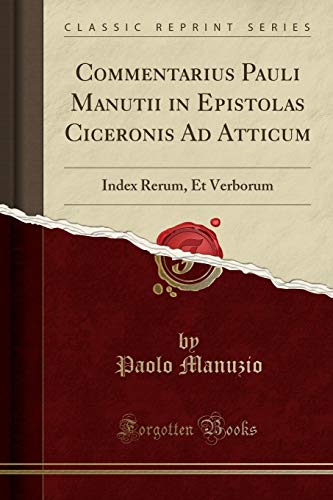
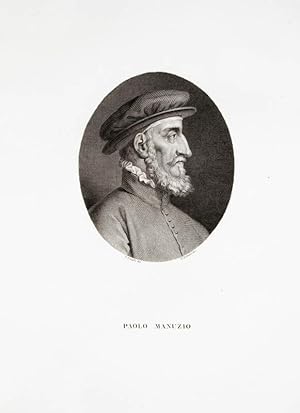

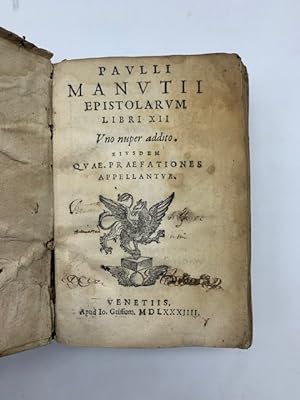

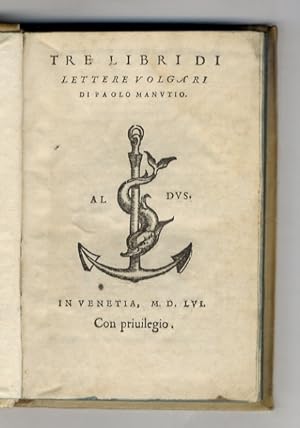
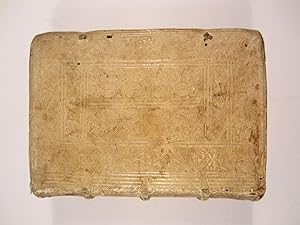
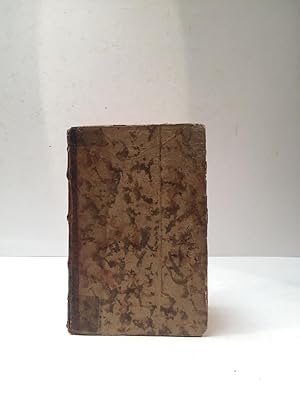
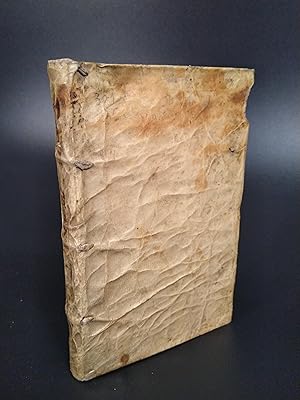
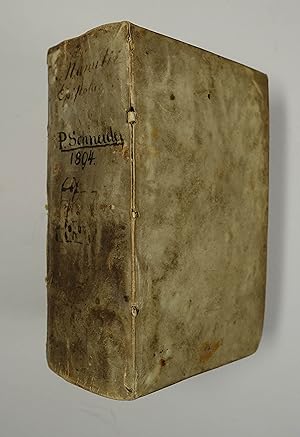
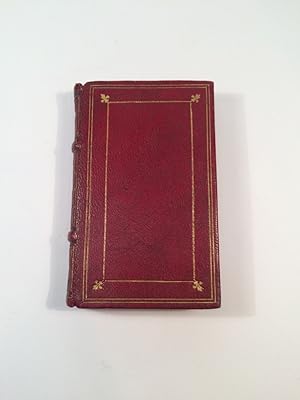
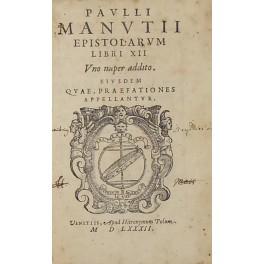
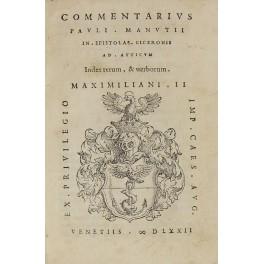
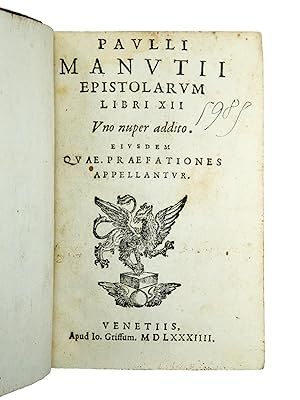
![Bild des Verkäufers für Epistolarum [.] libri V. Quincto nuper addito. Eiusdem quae præfationes appellantur zum Verkauf von Govi Rare Books LLC](https://pictures.abebooks.com/inventory/md/md31462261375.jpg)
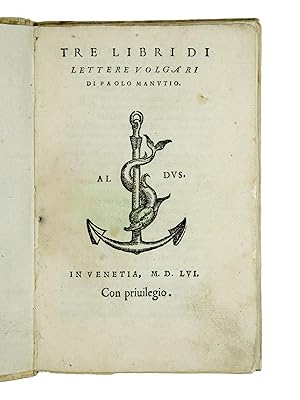
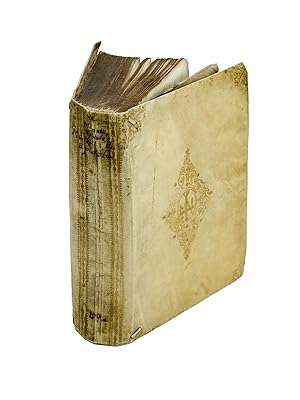

![Bild des Verkäufers für Lettere volgari di diversi nobilissimi huomini, et eccellentissimi ingegni, scritte in diverse materie, con la giunta del terzo libro, nuovamente ristampate, et in pià luoghi corrette. Libro primo [-secondo].(And:) MANUZIO, Paolo (1512-1574) & MANUZIO, Aldo eds. (1547-1597). Delle lettere volgari di diversi nobilissimi huomini, et eccellentissimi ingegni scritte in diverse materie, libro terzo, nuovamente mandato in luce. zum Verkauf von Govi Rare Books LLC](https://pictures.abebooks.com/inventory/md/md31462258750.jpg)
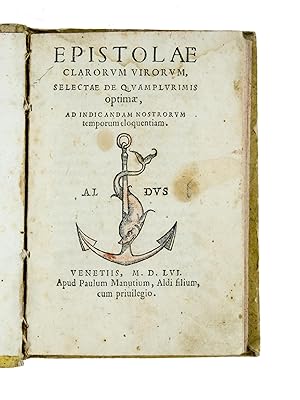
![Bild des Verkäufers für Commentarius Pauli Manutii in epistolas M. [Marci] Tulli Ciceronis ad M. [Marcum] Iunium Brutum & [et] ad Q. Ciceronem fratrem zum Verkauf von Libreria Antiquaria Pontremoli SRL](https://pictures.abebooks.com/inventory/md/md31140240675.jpg)

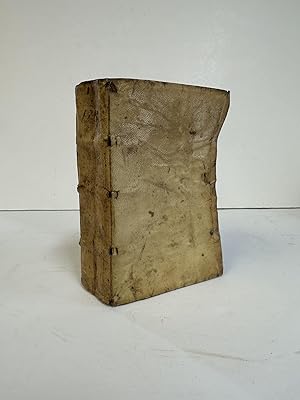
![Bild des Verkäufers für COMMENTARIUS IN EPISTOLAS M. TULLII CICERONIS AD M. JUNIUM BRUTUM & AD Q. CICERONEM FRATREM. [bound with] IN EPISTOLAS CICERONIS AD ATTICUM zum Verkauf von Phillip J. Pirages Rare Books (ABAA)](https://pictures.abebooks.com/inventory/md/md31263847437.jpg)
![Bild des Verkäufers für Lettere volgari di diversi nobilissimi huomini, et eccellentissimi ingegni, scritte in diverse materie. Nuovamente ristampate, et in più luoghi corrette. Libro primo [-secondo] zum Verkauf von Govi Rare Books LLC](https://pictures.abebooks.com/inventory/md/md31462098967.jpg)
